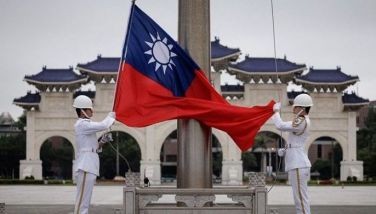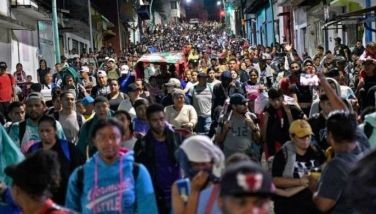Things to know about the federal government's nuke dump
ALBUQUERQUE — Valentine's Day 2014 was coming to a close. There were fewer than a dozen workers holding down the night shift at the federal government's nuclear waste repository in southern New Mexico.
An alarm sounded inside the central monitoring room less than an hour before midnight. Somewhere in the underground salt caverns, radioactivity triggered the sensors. The ventilation system kicked in, forcing contaminated air through filters and then to the surface.
Most of the workers who showed up the next morning ended up being sent home. In all, 22 workers were contaminated with low levels of radiation, and work at the Waste Isolation Pilot Plant has been on hold ever since, leaving the government without a place to permanently stash tons of Cold War-era waste.
Here are things to know about the nuclear repository a year after the mishap:
___
THE INVESTIGATION
Federal investigators are reviewing the last bits of evidence collected earlier this month — high-resolution images gathered from inside the storeroom where a container of waste ruptured, triggering the radiation release. They used a specially designed camera boom to get a good view between and across the stacks of waste. US Energy Department officials say the images confirm the release stemmed from a single drum of waste. A final report is expected before the end of March.
___
HOW DID IT HAPPEN?
The investigation team has pored over reams of documents and has picked apart the procedures and policies at both the Waste Isolation Pilot Plant and Los Alamos National Laboratory, where the container of waste was initially packed. Officials suspect the breach stemmed from a chemical reaction in highly acidic waste containing a lead-based glove that was packed with organic cat litter to absorb moisture. According to the New Mexico Environment Department, experts had notified the lab to stop using organic materials as early as 2012 because of the possible dangers of mixing them with nitrate salts. The US Department of Energy's inspector general also raised questions about the lab management's oversight of written procedures for handling the waste. Initial reports that followed the incident also blamed a slow erosion of the Waste Isolation Pilot Plant's safety culture.
___
NO NUCLEAR DUMP, NO CLEANUP
The indefinite closure of the repository has delayed cleanup of legacy waste like contaminated gloves, tools and clothing from decades of bomb-making across the federal government's nuclear complex. In its 15 years of operation, the Waste Isolation Pilot Plant received shipments from more than 20 different sites as part of the Energy Department's multibillion-dollar-a-year cleanup program. Los Alamos, for example, was under orders from New Mexico to remove thousands of barrels of toxic waste from outdoor storage on a mesa before wildfire season peaked last summer. With shipments and disposal on hold, the lab is temporarily storing waste in steel and glass structures that are monitored regularly. Energy Secretary Ernest Moniz has said reopening the Waste Isolation Pilot Plant is a priority for the nation.
___
CONSEQUENCES
Four Los Alamos lab workers were reassigned as a result of the incident, and the Energy Department pulled nuclear waste cleanup operations from the contractor that runs the lab. As part of the financial fallout, contactors at Los Alamos lab and the repository were also denied millions of dollars in performance pay by the federal government. That's in addition to the $54 million in fines levied by the state against the Energy Department and the contractors over numerous permit violations that were outlined in compliance orders issued in December. New Mexico Environment Secretary Ryan Flynn threatened this week that another round of more than $100 million in fines is possible if the Energy Department doesn't accept accountability.
___
THE FUTURE
Energy Secretary Moniz acknowledged during a congressional hearing Thursday that the time table and budget for getting the Waste Isolation Pilot Plant back on track was "a little bit uncertain." The recovery plan calls for full operations by 2018, and officials have estimated it could take more than a half-billion dollars to do it. Even if it happens, watchdog Don Hancock of the Southwest Research and Information Center said the repository doesn't have enough room for the waste already in the waiting line. Since the nuclear dump was designed as a pilot plant to demonstrate the feasibility of safely storing nuclear waste in half-mile-deep salt beds, Hancock says it has a predetermined shelf life. He suggests it's time to start talking about what comes after the Waste Isolation Pilot Plant.
- Latest
- Trending
































